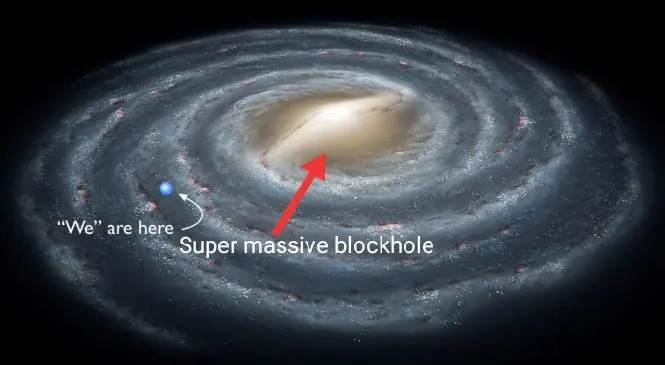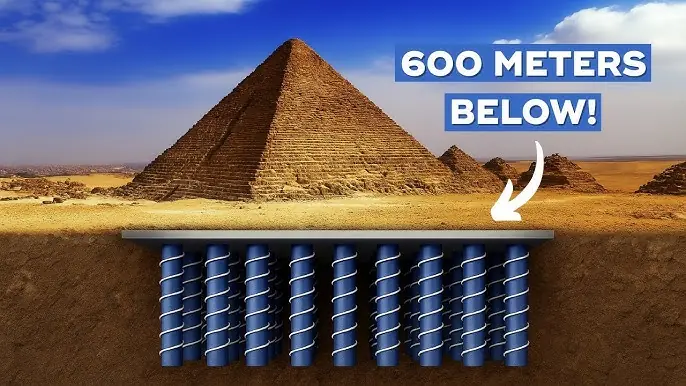
Could the Sahara Desert Power the Entire World with Solar Energy?
Could the Sahara Desert Power the Entire World with Solar Energy?

Imagine a future where the world’s electricity needs are met by sunlight captured in just a small portion of the Sahara Desert. According to scientists, covering just 1.2% of the Sahara with solar panels could generate enough power to supply the entire planet. With its vast open space and extreme levels of solar radiation, the Sahara is one of the most promising locations on Earth for large-scale solar energy production.
Why the Sahara Desert?
The Sahara is the largest hot desert in the world, spanning over 9 million square kilometers across North Africa. What makes it so appealing for solar power projects is its intense sunlight and lack of vegetation or urban development. On average, the desert receives around 4,000 hours of sunshine per year, making it one of the sunniest places on Earth.
This abundance of solar energy means that even a small portion of the desert, if equipped with high-efficiency photovoltaic panels, could generate terawatts of clean electricity—more than enough to meet global demand.
The Desertec Vision: A Real-World Plan
This bold idea isn’t just theoretical. Projects like Desertec, a large-scale renewable energy initiative, have already explored the concept of building solar farms in the Sahara. The goal is to transmit electricity from North Africa to Europe and beyond, helping multiple continents reduce their reliance on fossil fuels.
Desertec proposed using concentrated solar power (CSP) and photovoltaic (PV) technologies to create a vast energy network. The electricity generated would be delivered through high-voltage direct current (HVDC) lines, which lose far less energy than traditional transmission systems over long distances.
The Challenges: Not Just Technical
Despite the enormous potential, there are still significant hurdles to overcome. Building and maintaining solar farms in the desert presents logistical and environmental challenges, including:
-
Extreme heat and sandstorms that can damage equipment
-
High initial costs for infrastructure and transmission networks
-
Political instability in parts of North Africa
-
The need for international cooperation on energy policy and distribution
Moreover, massive solar farms could have unintended environmental impacts, such as altering local climates or displacing wildlife. These concerns must be carefully studied and managed.
A Path Toward Global Energy Sustainability
If these challenges can be addressed, the benefits could be revolutionary. A Sahara-based solar grid could provide:
-
Clean, renewable energy for billions
-
Greater energy independence for many nations
-
Significant reductions in global carbon emissions
-
A new economic opportunity for desert-bordering countries
Harnessing solar power at this scale could mark a turning point in the global energy transition—shifting away from fossil fuels toward a sustainable, solar-powered future.
Turning the Desert into a Global Powerhouse
The idea of turning a seemingly barren desert into the world’s most powerful green energy source is inspiring. While the road ahead includes technical, financial, and political challenges, the vision is clear: the Sahara Desert could become a solar powerhouse, offering a viable solution to the world’s growing energy needs and climate crisis.
As advancements in solar technology, energy storage, and international collaboration continue, the dream of powering the world from the sun-soaked sands of the Sahara may one day become a reality.
News in the same category


Halley’s Comet Is Back, But This Time, It’s Raining Fire

Greece Rocked By Massive Earthquake As Tsunami Warning Sparks Panic

Sun Unleashes Monster Flare As Scientists Say Earth Could Be Hit By Massive Solar Storm Tomorrow

Modern House Fires Burn Faster: Why You May Have Only 3 Minutes to Escape

Drunk Bees? How Fermented Nectar Affects Honeybees in Australia

How Small Earth Is in the Universe—And Why That Should Inspire Us

$20 Trillion Tunnel Could Zip You From U.S. To U.K. In Just 54 Minutes

Scientists Baffled By Earth’s Mysterious 26-Second ‘Heartbeat’—Still No Clear Explanation

Deep-Sea Discovery: How “Battery Rocks” Are Producing Oxygen 4,000 Meters Below the Pacific

Understanding Evolution: Evidence That Species Evolve Over Time

Alfred Wegener: The Scientist Who Was Laughed at in 1912—But Changed Earth Science Forever

Shocking Discovery Beneath the Great Pyramid of Giza: Lost Advanced Technology?

Scientists Propose Cooling Earth By Spraying 12 Million Tons Of Particles From Boeing Jets

From Recycled Materials To Viral Fame: Teen’s Diy Lamborghini Replica Turns Heads

Astronomer Rides Simulation To The Edge Of The Universe—Chasing Light From The Big Bang

Controversial Inventor’s Mysterious Death Sparks Debate Over Alternative Energy Suppression

Largest Dinosaur Ever Discovered in Argentina: New Titanosaur Fossil Unearthed

Dark Oxygen" Discovered in Pacific Ocean: A Breakthrough in Understanding Life on Earth and Beyond
News Post

Persistence Hunting: How the San People of the Kalahari Master the Art of Endurance

Halley’s Comet Is Back, But This Time, It’s Raining Fire

Breakthrough Cancer Treatment Uses Ultrasound and Microbubbles to Destroy Tumors from Within

Fatty Liver Disease Affects 1 in 4 People — A New Treatment Shows Promising Results

Menopausal Brain Fog? Low Iron Levels May Be the Hidden Cause

Lung Cleansing with a Powerful Natural Garlic Juice

A recent study has uncovered a key switch in aging—and it all comes down to a structure inside your cells called the nucleolus

ScienceScientists Say Viral Infections Could Be The Hidden Cause Of Alzheimer’s — 30 Years Of Research Now Validated

Greece Rocked By Massive Earthquake As Tsunami Warning Sparks Panic

Sun Unleashes Monster Flare As Scientists Say Earth Could Be Hit By Massive Solar Storm Tomorrow

🧄🌿 Natural Remedy for Leg Pain, Rheumatism, Varicose Veins & Arthritis with Cloves and Garlic

Modern House Fires Burn Faster: Why You May Have Only 3 Minutes to Escape

White Clover (Trifolium repens): 15 Benefits and Homemade Uses

A Mom of 7 Demanded My Deaf Grandpa Get Out of the Elevator—So I Brought Her Back to Reality

Breakthrough Protein Combo Could Heal Heart Damage and Regenerate Organs

Head Injuries May Reactivate Dormant Viruses and Trigger Alzheimer’s-Like Brain Damage

How Blood Production Changes After 70: New Research Reveals a Surprising Shift

My Ex-husband Got Our House, Car and All Our Money After Divorce – I Laughed Because That Was Exactly What I Planned
